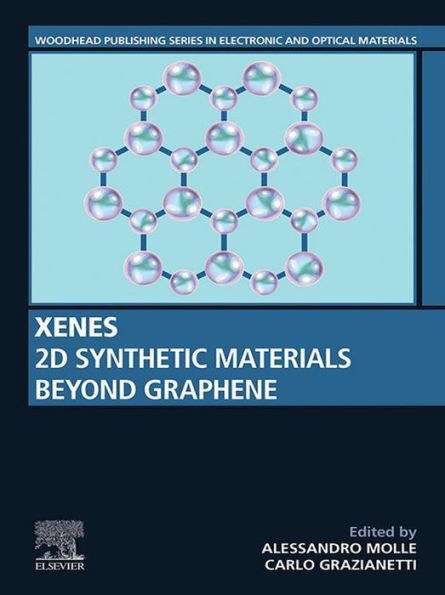Xenes: 2D Synthetic Materials Beyond Graphene includes all the relevant information about Xenes thus far reported, focusing on emerging materials and new trends. The book's primary goal is to include full descriptions of each Xene type by leading experts in the area. Each chapter will provide key principles, theories, methods, experiments and potential applications. The book also reviews the key challenges for synthetic 2D materials such as characterization, modeling, synthesis, and integration strategies. This comprehensive book is suitable for materials scientists and engineers, physicists and chemists working in academia and R&D in industry.
The discovery of silicene dates back to 2012. Since then, other Xenes were subsequently created with synthetic methods. The portfolio of Xenes includes different chemical elements of the periodic table and hence the related honeycomb-like lattices show a wealth of electronic and optical properties that can be successfully exploited for applications.
- Introduces the most important Xenes, including silicene, germanene, borophene, gallenene, phosphorene, and more
- Provides the fundamental principles, theories, experiments and applications for the most relevant synthetic 2D materials
- Addresses techniques for the characterization, synthesis and integration of synthetic 2D materials
Xenes: 2D Synthetic Materials Beyond Graphene includes all the relevant information about Xenes thus far reported, focusing on emerging materials and new trends. The book's primary goal is to include full descriptions of each Xene type by leading experts in the area. Each chapter will provide key principles, theories, methods, experiments and potential applications. The book also reviews the key challenges for synthetic 2D materials such as characterization, modeling, synthesis, and integration strategies. This comprehensive book is suitable for materials scientists and engineers, physicists and chemists working in academia and R&D in industry.
The discovery of silicene dates back to 2012. Since then, other Xenes were subsequently created with synthetic methods. The portfolio of Xenes includes different chemical elements of the periodic table and hence the related honeycomb-like lattices show a wealth of electronic and optical properties that can be successfully exploited for applications.
- Introduces the most important Xenes, including silicene, germanene, borophene, gallenene, phosphorene, and more
- Provides the fundamental principles, theories, experiments and applications for the most relevant synthetic 2D materials
- Addresses techniques for the characterization, synthesis and integration of synthetic 2D materials

Xenes: 2D Synthetic Materials Beyond Graphene
474
Xenes: 2D Synthetic Materials Beyond Graphene
474eBook
Related collections and offers

Product Details
| ISBN-13: | 9780128238387 |
|---|---|
| Publisher: | Elsevier Science |
| Publication date: | 06/29/2022 |
| Series: | Woodhead Publishing Series in Electronic and Optical Materials |
| Sold by: | Barnes & Noble |
| Format: | eBook |
| Pages: | 474 |
| File size: | 24 MB |
| Note: | This product may take a few minutes to download. |
